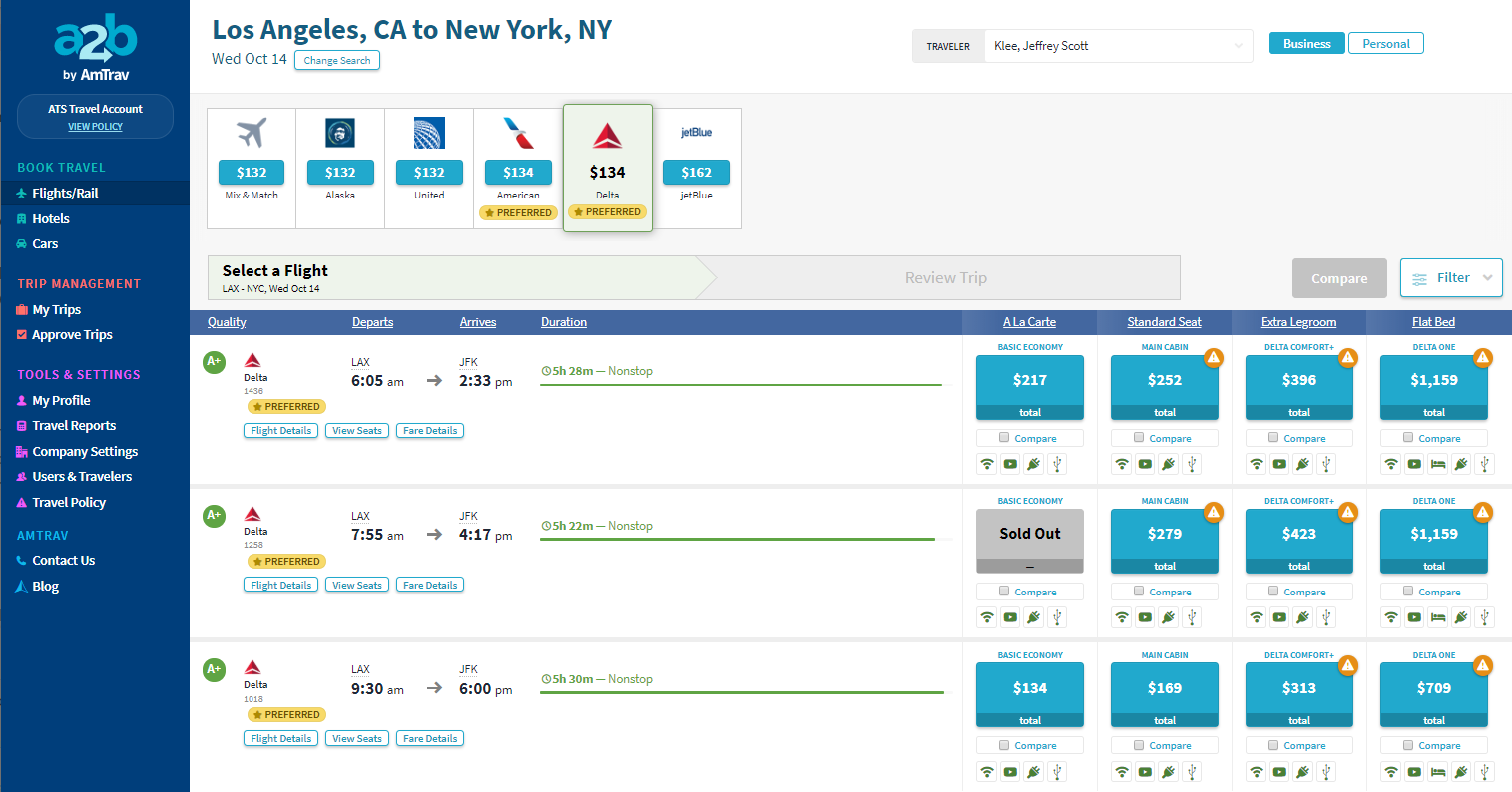“New Distribution Capability” (NDC) is an airline initiative to modernize the way airline tickets are sold on third party web sites. The effort has been somewhat controversial and has faced resistance by some who are opposed to such a large scale disruption of legacy distribution systems. AmTrav has been an outspoken proponent of NDC. This Op-Ed first appeared February 2, 2020 on The Company Dime.
So here we are in 2020, the year when NDC is supposed to move from “Yes, it works” to “Look how we can do this at scale”. At AmTrav, we’re live with three NDC connections and in various stages of development with several others. But the other day when someone asked me if I could present a case study at an industry event with a travel buyer who’s benefitted from NDC, I was hard pressed to come up with a story that would really be compelling.
I’ve been a little obsessed with NDC over the last few years. Last year, in particular, was a roller coaster, with roughly equal doses of hope, excitement, frustration, and disillusionment. As the industry marches toward IATA’s 20% goal, I can’t help but think that we were supposed to be a lot further by now.
It’s not the end of the world to be behind schedule. I understand that sometimes the best way to accomplish all that we can is to try to accomplish even more. My concern, though, is that we’re focusing on the wrong metric. What if, by year end, 20% of bookings do go through an NDC API, but travelers aren’t better off?
We have to keep reminding ourselves that our customers don’t care how we pass data back and forth. They don’t care about schemas or protocols or standards. They care about choice and savings and comfort and they’d be happy if we could make their lives easier.
I cared a lot last year about being first with certain NDC connections. I judged GDS’s by how many airlines they were live with. But I came to learn, what good is an NDC API that doesn’t provide new benefits and a full end-to-end solution? What good are really attractive corporate bundles, if there’s no way to change a ticket when you need to?
My takeaway from 2019 is that first is good, but good is better. And so we at AmTrav have come up with a new internal metric to measure progress on our own new distribution platform. We’re going to stop counting NDC adoptions, or even labeling them, and instead focus on and measure only what matters to the end user: content and capabilities.
Our new formula which we call our “Flight 360 Scoreboard” measures our ability to deliver full content and functionality for each airline. For each one, we assign a score between 0 and 100. If all we can offer for that airline is basic low fare shop-price-and-book circa 2010, we assign 0. To get a perfect score for an airline, we need, among other things, to be able to:
- Display all their fare brands in the initial shopping results
- Identify the attributes, rules, and fees associates with each brand
- Identify when travelers (due to status) qualify automatically for extra perks
- Provide a detailed view of in-flight amenities and seat types
- Show images of the aircraft
- Show seat maps and allow users to pick any seat offered, free or paid
- Offer any post-booking ancillary that is offered on the Airline.com site
- Allow self-service changes pre or post departure
- Meet maximum response time thresholds
For each airline, we calculate its score. Then we take the weighted average of that score, based on the airline’s share of our total volume, and add them all together to get our company’s total air shopping capability score (we’re still trying to come up with a catchy name for that).
Our goal is to hit the maximum, 100. Right now we’re at 47.4. (We’re tough scorers. By the same standard, the most popular corporate booking tool Concur is at 15.9).
Importantly, our score doesn’t consider where the content comes from. We don’t care if, behind the scenes, it’s an NDC connection, an old school EDIFACT one, another API, or even content curated in Excel. Our users won’t know and don’t care. This isn’t about high tech or low tech or new tech or old tech. We just need the content, so our customers can have the experience.
Of course, given where we are today, NDC API’s still hold the most promise to close our content gap. And the urgency to do so continues to increase. ARC’s Mike Premo spoke recently about the “gravity pulling business travelers to airline websites”. With their omni-channel strategy, ARC is hedging against the “What if we never get this right?” outcome. Delta’s new business travel portal does the same. Meanwhile, Concur’s Triplink continues to pick up steam, steadily if not spectacularly, while TMC’s continue to mock it like frogs in boiling water.
More than ever, road warriors get a better booking experience with more options if they book with an airline directly. In our industry’s quest to solve this problem, 2020 is going to be a consequential year. Moving forward, let’s make sure we’re not just window dressing. Let’s make our new distribution capabilities solid and stable and speedy. And let’s make sure they come with enough “N” and “C” to make it interesting to corporate buyers.
Let’s forget about more lipstick for a while and make this the year for less pig.

Jeff Klee





